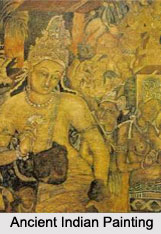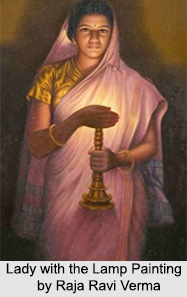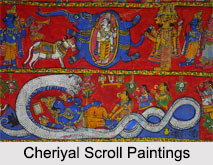Made out of wood, the plaques were cut in the same shape as that of the manuscript to serve as the front and back covers. The front covers of these plaques were painted and some of these painted plaques are currently put on display as exhibits at the Ashutosh Museum, Indian Museum, the Museum of the Archaeological Authority of West Bengal, Gurusaday Museum, Acharya Jogesh Chandra Archaeology House, Ananda Bhaban, etc. These plaque paintings are also part of private collections.
Description of Plaque Paintings
Known to have originated in the state of West Bengal, the plaque paintings have been classified by art critics under two categories. The first category exhibits an amalgamation of the Rajasthani style of painting and other hilly regions, which represent a classical art style. The second category has some kind of semblance to the painting style of Odisha and lastly, the third category conforms to the style of folk painting prevailing in Bankura, Medinipur, Birbhum and Murshidabad districts of West Bengal. The last two categories of plaque paintings display the design, colouring, drawing of lines and style of expression which are a distinct influence of the prevailing folk arts in Bengal.
The primary theme of these plaque paintings mainly circulated around divine subjects like Lord Krishna, Lord Rama and the various activities of Shri Chaitanya. The folk artists" painting these plaques have been doing it for successive generations and have adopted this profession as their means of livelihood. The unique combination of beauty and explicit release of the artist`s feelings displayed in the plaque paintings is indeed a remarkable achievement in the field of Bengali folk art.



















